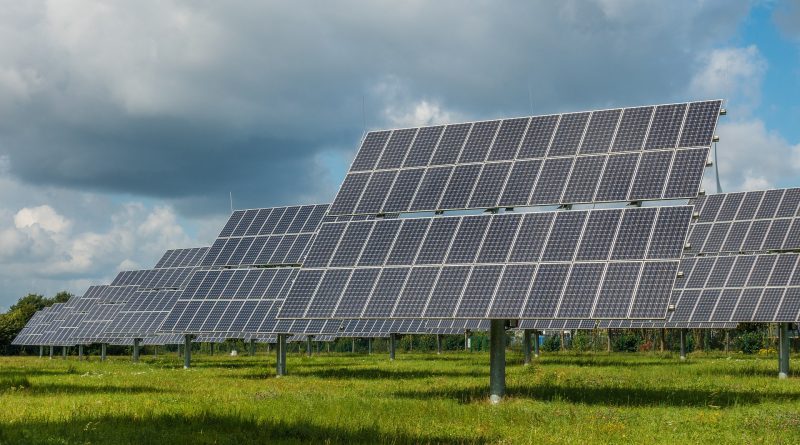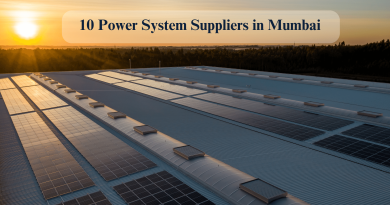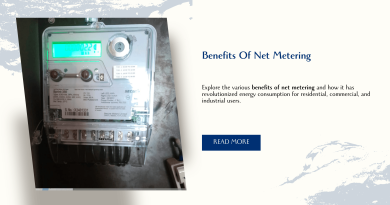Essential Guide to On-Grid Solar Power
Solar power is becoming increasingly popular as a clean and renewable energy source. With the threat of climate change and the need to reduce greenhouse gas emissions, many people are turning to solar power to meet their energy needs. One of the most common types of solar power systems is the ongrid solar power system. In this blog, we will explore what exactly ongrid solar power is, how it works, and why it is a beneficial option for homeowners and businesses alike.
Table of Contents
What is On-grid solar power?
Ongrid solar power, also known as grid-tied solar power, is a type of solar power system that is connected to the electricity grid. Unlike off-grid solar power systems, which are independent and not connected to the grid, ongrid solar power systems work in conjunction with the existing electricity infrastructure. This means that when the solar panels produce more electricity than is being consumed, the excess electricity is fed back into the grid. On the other hand, when the solar panels do not produce enough electricity to meet the demand, electricity is drawn from the grid to make up the difference.
How does On-grid solar power work?
To understand how ongrid solar power works, it’s important to know the main components of this type of system. The primary components include the solar panels, an inverter, and a bi-directional meter.
Solar panels are responsible for converting sunlight into electricity. They consist of multiple solar cells made from silicon, which generate direct current (DC) electricity when exposed to sunlight. These solar panels are usually installed on the roof of a house or a building but can also be ground-mounted.
The DC electricity generated by the solar panels needs to be converted into alternating current (AC) electricity to power household appliances and equipment. This is where the inverter comes in. The inverter converts the DC electricity into AC electricity, which is the standard form of electricity used in homes and businesses.
The bi-directional meter, also known as a net meter, is used to measure the electricity flow between the solar power system and the grid. When the solar panels are producing more electricity than is being consumed, the excess electricity is fed back into the grid, and the bi-directional meter measures the amount of electricity being exported. Conversely, when the solar panels are not producing enough electricity, electricity is drawn from the grid, and the bi-directional meter records the amount of electricity being imported.
Benefits of On-grid solar power
There are several benefits to installing an ongrid solar power system.
1. Reduced electricity bills: By producing your own electricity, you can reduce or eliminate your dependency on the grid, resulting in lower electricity bills. When your solar panels produce more electricity than you consume, you can even earn credits from the excess electricity being fed back into the grid.
2. Environmental benefits: Ongrid solar power is a clean and renewable energy source, meaning it does not release harmful greenhouse gases into the atmosphere. By reducing your reliance on fossil fuels, ongrid solar power helps mitigate climate change and reduce air pollution.
3. Return on investment: While the initial cost of installing an ongrid solar power system can be significant, it is considered a long-term investment. Over time, the savings on electricity bills can offset the installation and maintenance costs, resulting in a positive return on investment.
4. Grid independence and reliability: With an ongrid solar power system, you can still benefit from the grid’s reliability and stability. If your solar panels do not produce enough electricity, you can draw power from the grid. Furthermore, during blackouts or power outages, your solar power system can automatically shut down to protect utility workers.
5. Net metering policies: Many utilities offer net metering policies, which allow homeowners and businesses with ongrid solar power systems to earn credits for excess electricity produced. These credits can be carried forward and used during periods when the solar panels do not generate enough electricity.
Conclusion
Unlock the potential of sustainable energy with on-grid solar power from SolarClue®. Ideal for both homeowners and businesses, our on-grid solar systems connect seamlessly to the electricity grid, offering a range of benefits. Experience reduced electricity bills, contribute to environmental sustainability, achieve a positive return on investment, gain grid independence, and capitalize on net metering policies. As the world accelerates its shift towards renewable energy sources, on-grid solar power becomes pivotal in steering us towards a greener and more sustainable future. Join SolarClue® in embracing the power of the sun for a brighter tomorrow.
Frequently Asked Questions
On-grid systems are connected to the utility grid, allowing for seamless energy exchange.
Cost-effectiveness depends on factors like location, energy needs, and grid accessibility.
Typically, on-grid systems prioritize feeding excess energy back into the grid rather than storage.
Government incentives often encourage on-grid solar adoption, promoting cleaner energy.
On-grid systems rely on a stable grid, making them less suitable for areas with frequent power outages.
It’s possible but involves system modifications. Plan for your future energy needs.
On-grid systems may have lower maintenance costs due to grid support.
Most on-grid systems shut down during outages to ensure grid worker safety.
Yes, on-grid systems contribute to reducing carbon footprint by harnessing clean energy.
Yes, many on-grid setups allow feeding surplus energy back, potentially earning credits.




